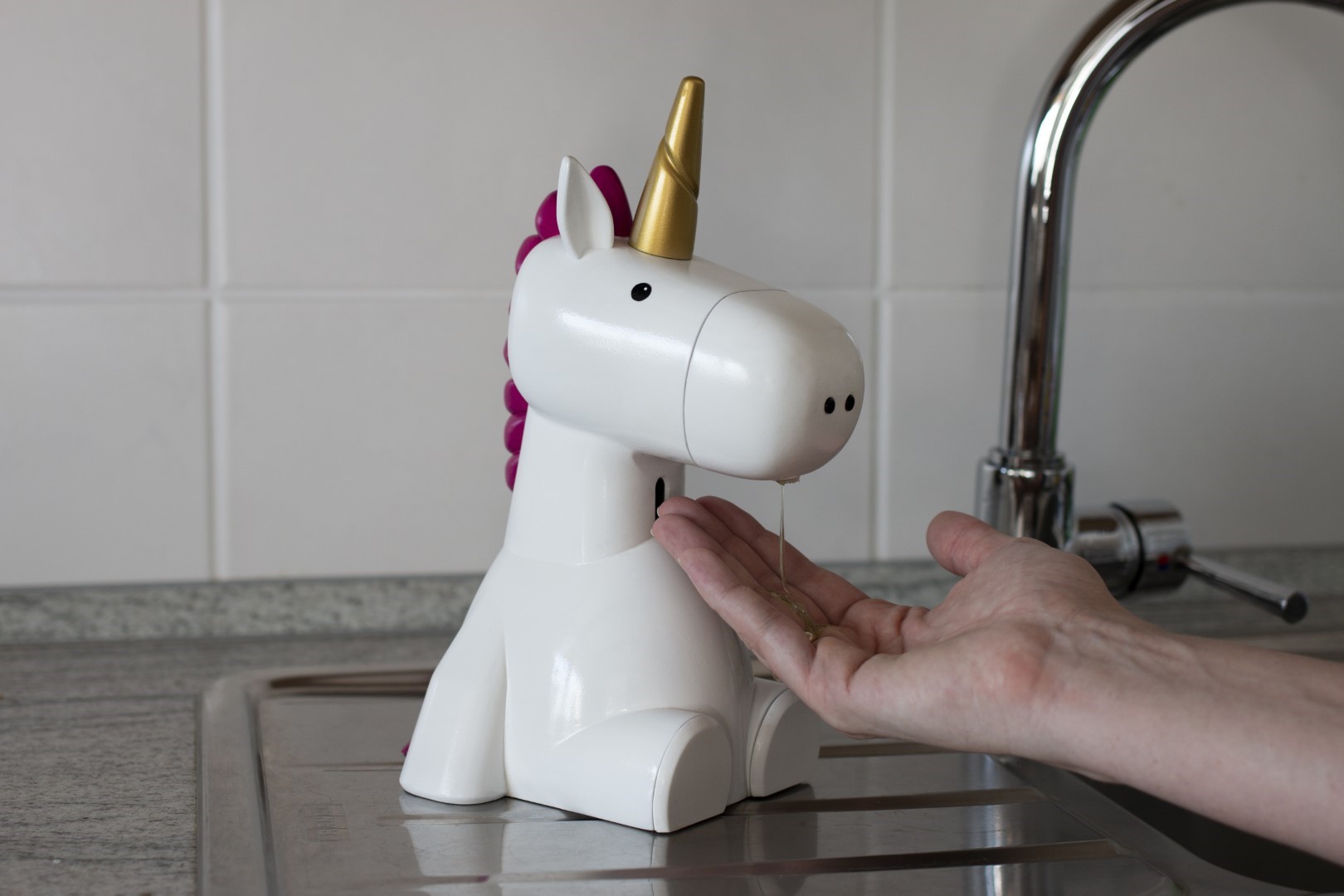If you ever thought cleaning would be infinitely more fun if it could be done with unicorn vomit, you’ve come to the right place. I’m going to show how to 3D print and build your own soap dispenser that looks like a unicorn.
The horn can be unscrewed to add soap. There’s a pushbutton hidden in the right nostril that turns the sensor on and can be used to increase the amount of soap dispensed. Another pushbutton hidden in the left nostril turns the sensor off or reduces the amount of soap dispensed. The battery compartment is hidden in the right foot.
I’d wanted to make something with a unicorn for quite some time. Originally I planned to build a wine bottle opener but decided against it, since I don’t drink wine. I always loved Sam Elder’s Pooping Reindeer Candy Dispenser on Instructables, and thought about turning it into a unicorn, but decided that since his version is already so great, turning it into a unicorn wouldn’t add much (and I’m allergic to chocolate). Finally, after walking into my kitchen and seeing my Deadpool Knife Block, I decided that a unicorn vomiting Ajax would go perfectly with it.





